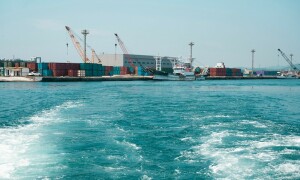Crop scouts are out in the fields this week assessing hard red winter wheat potential in the top US wheat state of Kansas, which is suffering from its driest growing season in more than 30 years. Given the precarious state of Kansas' wheat, there are some factors to keep in mind while digesting this year's tour data. Terrible crop ratings and slower-than-normal progress will present challenges to the scouts, but the results should be just as reliable as in any other year.
The tour, hosted annually by the Wheat Quality Council, aims to get a feel for the potential size of the Kansas wheat crop before the US Department of Agriculture issues its first forecast of the season. This year, USDA's report is due on May 10 at noon EDT (1600 GMT).
Over three days, tour scouts measure the average number of stalks per foot (30 cm) and the row spacing in fields all over the state. With those numbers, they compute a rough yield based on historical averages of head counts and average weights per head. It is important to remember that this formula does not consider test weight or normal harvesting losses. Therefore, the yield projections should be used strictly as a guide, not a final number.
More than 90 percent of Kansas' wheat crop is grown in the western two-thirds of the state, and this is crop scouts' primary area of focus. The heaviest wheat-producing district is the South Central one, which grows 24 percent of the crop. The Central district is No 2 with 18 percent of the crop and the Southwest district comes in third with 15 percent. The top three districts have also been the driest relative to normal since the crop was planted.
One key difference between this year's tour and last year's is the stage of the wheat. As of April 29, only 2 percent of the wheat in Kansas was heading compared with 41 percent a year earlier. The five-year average is 24 percent. The head is the part of the wheat plant that houses the kernels, where the grain is produced. This is generally an important feature to inspect on the wheat tour, but its absence does not at all devalue scouts' findings.
Of the past 18 years, there have been six in which the tour's final Kansas wheat yield was within 5 percent or less of USDA's May peg. As of April 29 in those six years, heading progress was between 2 and 11 percent - well below the long-term average. Part of the reason that Kansas' wheat is so immature is last fall's extraordinarily slow planting pace. The majority of the state's crop is usually planted in the last week of September through the first half of October, but the bulk of the 2018 crop was planted in the second half of October - ironically due to heavy rains.
Historically low precipitation through the winter and springtime rains of only half the normal levels have continued to hold back growth, along with cooler temperatures. According to the Midwestern Regional Climate Center, April featured temperatures 6.5 degrees below average in Kansas. That is the coolest since 1983 and second-coolest on record back to 1895.
BR100
12,653
Increased By
64.1 (0.51%)
BR30
37,927
Increased By
47.9 (0.13%)
KSE100
118,090
Increased By
774.9 (0.66%)
KSE30
36,367
Increased By
251 (0.69%)




















Comments
Comments are closed.